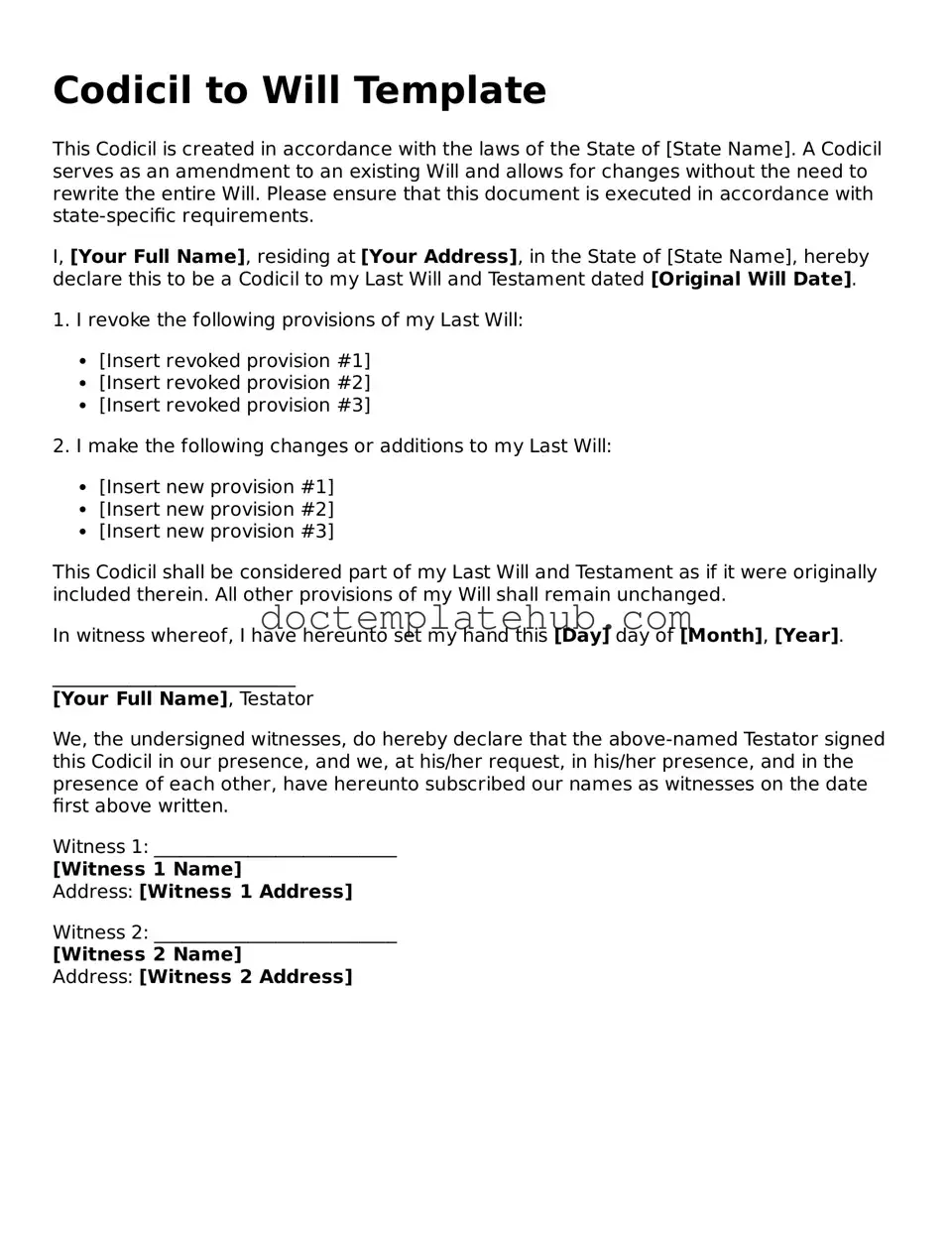The Codicil to Will form is similar to a Last Will and Testament. Both documents serve the purpose of outlining an individual's wishes regarding the distribution of their assets after death. A Last Will is a comprehensive document that details how an individual wants their estate managed, while a Codicil allows for modifications or additions to an existing Will without the need to create an entirely new document. This flexibility is beneficial for those who may want to make minor changes as circumstances evolve.
Another similar document is the Revocable Living Trust. Like a Codicil, a Revocable Living Trust can be amended or revoked at any time during the creator's lifetime. Both documents help manage the distribution of assets and can simplify the probate process. However, a Living Trust can also provide benefits during the creator's lifetime, such as avoiding probate and managing assets in case of incapacity.
The Durable Power of Attorney is another related document. While a Codicil focuses on the distribution of assets after death, a Durable Power of Attorney allows an individual to designate someone to make financial or medical decisions on their behalf while they are still alive. Both documents are essential in estate planning, ensuring that a person's wishes are honored in various circumstances.
A Healthcare Proxy is similar in that it designates someone to make medical decisions if the individual becomes incapacitated. While a Codicil deals with asset distribution, a Healthcare Proxy focuses on healthcare decisions. Both documents empower individuals to choose trusted representatives to act on their behalf when they cannot do so themselves.
The Living Will is also akin to a Codicil. A Living Will outlines an individual's preferences for medical treatment in situations where they cannot communicate their wishes. While a Codicil modifies a Will, a Living Will provides guidance on healthcare decisions. Both documents ensure that a person's desires are respected, whether regarding asset distribution or medical care.
Another similar document is the Testamentary Trust. This trust is created through a Will and comes into effect upon the individual's death. Like a Codicil, it can be used to modify how assets are distributed. A Testamentary Trust can provide for minor children or individuals with special needs, ensuring that their financial needs are met in a structured manner after the individual's passing.
The Affidavit of Heirship is also comparable. This document is used to establish the rightful heirs of a deceased person's estate when no Will exists. While a Codicil modifies an existing Will, an Affidavit of Heirship serves to clarify the distribution of assets when there is no formal document. Both documents aim to resolve issues regarding asset distribution but in different contexts.
The various estate planning documents discussed, including wills and trusts, highlight the importance of clarity and precision in expressing one's final wishes. For those looking to create or modify their Last Will and Testament, resources like smarttemplates.net can provide valuable templates and guidance to ensure legal requirements are met and personal desires are clearly articulated.
The Assignment of Benefits document is similar as it allows individuals to transfer benefits or rights to another party. While a Codicil modifies a Will, an Assignment of Benefits can change who receives certain benefits, such as insurance payouts. Both documents can alter the intended distribution of assets but serve different purposes in the estate planning process.
Finally, the Bill of Sale is relevant in that it can transfer ownership of specific assets. While a Codicil addresses the distribution of an entire estate, a Bill of Sale is used for individual items, such as vehicles or personal property. Both documents facilitate the transfer of ownership, but they operate in different contexts and scopes.
